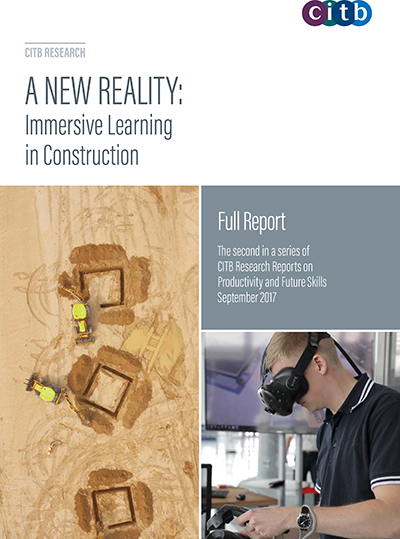Immersive learning has the potential to revolutionise training delivery, produce “work ready” employees and transform the perception of the construction sector, says a new report from CITB.
A New Reality: Immersive Learning in Construction shows how the use of digital technologies such as virtual and augmented reality can produce workers with greater ability and help modernise the industry.
Immersive learning allows students to be fully involved in an interactive, digital environment. It means trainees can, for example, practice crane manoeuvres, scale wind turbines, or visualise the detailed 3D build of a skyscraper – without leaving the classroom.
CITB’s report, the first of its kind for the construction sector, contains 36 interviews with stakeholders and 10 best practice examples. It shows how immersive learning can be cost-effective for employers and training providers and help reduce skills shortages by attracting more young people to construction.
The report says a number of challenges must be addressed to realise immersive learning’s potential. These include: improving understanding of what immersive learning is; increasing expertise in using the technology; and avoiding fragmented training provision.
Writing in the report’s foreword Andrew Wolstenholme OBE, co-chair of the Construction Leadership Council, said: “This report lays down the gauntlet for employers, trainers and the government to tackle key issues such as greater efficiency, skills and growth through innovation.
“It highlights the need to encourage take-up, standardise approaches and encourage collaboration between sectors, such as gaming, to develop successful applications.”
Steve Radley, CITB director of policy, said: “Immersive learning has huge potential. It can enhance construction’s appeal to a generation raised on gaming and virtual environments. It will also enable construction to compete with other sectors, such as engineering, which young people often view as an appealing industry because of its use of technology.
“Leadership, standards and collaboration are essential to harnessing the potential of this technology. We look forward to working with employers, trainers and the government to maximise the huge benefits immersive learning can bring.”

Immersive learning has huge potential. It can enhance construction’s appeal to a generation raised on gaming and virtual environments. It will also enable construction to compete with other sectors, such as engineering.– Steve Radley, CITB












